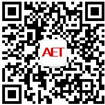用LED矩阵屏 显示网络摄像头图像
0赞介绍
在现代Web浏览器中,JavaScript公开了一些非常强大的特性。其中之一就是webkitGetUserMedia 功能,它可以让你访问一个电脑的webcam(在允许的情况下)
在这个例子中,我们将用Espruino板子来将服务器连接一个可以访问Webcam的页面,并发送一个低像素的图片给Espruino板,然后就可以显示在一个LED矩阵屏上。
你将需要
连线
软件
第一步是做一个页面,可以获取从webcam来的图像。如下的代码是比较基础的,基本没有错误。
然后,你需要打包成一个字符串,并保存在Espruino中。你可以保存成一个文件,放在一个SD卡中,但是将页面存成一个字符串意味着Espruino不需要一个卡来操作。我简单的删除了评论(为了节省空间)并在le Converter] 页打开文件。
这是用于Espruino本身的代码 — 看到内联注释:
// The webpage from above
var page = “\n
\n \n \n\n\n\n”;// This is called whenever a webpage is requested
function onPageRequest(req,res) {
res.writeHead(200, {‘Content-Type’: ‘text/html’});
// work out what page was requested
var rurl = url.parse(req.url,true);
if (rurl.pathname==”/”) {
// If the page was the main webpage, send it out
res.write(page);
}else if (rurl.pathname==”/set”) {
// if the page was our ‘/set’ webpage…
// Create a 16×16 image structure
var img = {
width : 16, height : 16, bpp : 24,
buffer : new Uint8Array(16*16*3)
};
// Fill it with the data we got sent
var s = rurl.query.rgb;
for (var i=0;i<768;i++)
img.buffer[i] = s.charCodeAt(i)-65;
// Draw it onto the LED display’s buffer
leds.drawImage(img, 0, 0);
// Finally send the data to the display
leds.flip();
}
// Finish sending our webpage response
res.end();
}
// Set up LEDs
SPI2.setup({baud:3200000, mosi:B15});
var leds = Graphics.createArrayBuffer(16,16,24,{zigzag:true});
leds.flip = function() { SPI2.send4bit(leds.buffer, 0b0001, 0b0011); };
leds.clear();
// Set up ethernet and our webserver var eth;
function onInit() {
var eth = require(“WIZnet”).connect();
console.log(eth.getIP()); require(“http”).createServer(onPageRequest).listen(80);
}
onInit();
只要将这些代码复制并粘贴到右手边的WEB IDE中,并点击 Send to Espruino。它应该就立刻能工作了!
当Espruino启动时,它的IP地址将打印出来,这样你就会知道你将连接哪来分享你的Webcam了。
这个页面是从GitHub中自动生成的。如有任何问题及建议,请让我知道。
查看:原文

